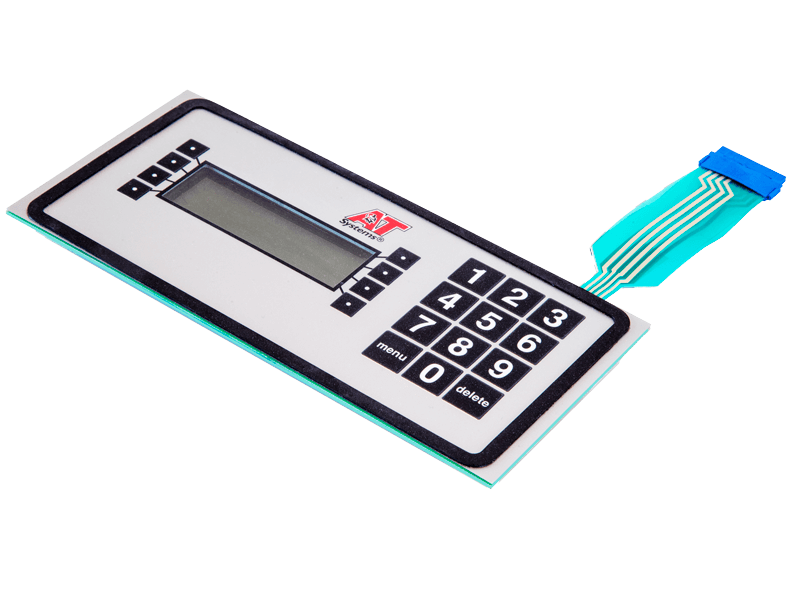Explore Customized Printing and Graphic Overlay Options for Membrane Switches
Explore Customized Printing and Graphic Overlay Options for Membrane Switches
Blog Article
Discover the Future of Control Interfaces: Why Membrane Layer Switches Over Are Gaining Appeal
As industries increasingly focus on efficient and user-friendly control user interfaces, membrane layer buttons are becoming a compelling remedy that integrates capability with layout adaptability. Their durability and compact nature make them specifically suited for a variety of applications, from medical care to customer electronics. With the surge of clever modern technology and sustainability concerns, the capabilities and innovations surrounding membrane layer switches over warrant closer assessment. What details benefits do they provide that could redefine our communications with innovation in the coming years?
Recognizing Membrane Layer Switches
Membrane layer switches are integral components in contemporary digital devices, serving as user interfaces between customers and machines. These buttons consist of numerous layers, typically consisting of a visuals overlay, a spacer layer, and a circuit layer.

Longevity is an additional key feature, as membrane switches can be developed to stand up to environmental factors such as moisture, dust, and chemicals. This strength makes them ideal for applications in rough conditions. In general, comprehending the structure and function of membrane layer switches is important for appreciating their role in the development of interface in today's technology-driven globe.
Key Advantages of Membrane Switches
Supplying a variety of benefits, membrane buttons have ended up being a preferred option in various applications (Membrane Switches). One of the key advantages is their portable design, making it possible for suppliers to enhance room in devices without compromising capability. Membrane layer switches are lightweight, which is especially important in mobile electronic tools

Additionally, these switches give superb toughness. Created from adaptable materials, they are immune to dust, wetness, and a variety of ecological elements, making them appropriate for harsh problems. This resilience frequently converts into a longer life expectancy compared to traditional mechanical buttons.
Furthermore, membrane changes permit for seamless combination of symbols and graphics, using visual adaptability and boosting user experience. Customization options are comprehensive, allowing brands to produce unique interfaces that straighten with their item identity.
The flat surface area of membrane layer switches protects against the buildup of dirt and gunk, making them excellent for hygienic environments. Membrane layer buttons are affordable, as they can be generated in high volumes at lower costs, making them available for a vast variety of markets.
Applications Across Industries

A myriad of industries are significantly adopting membrane layer switches due to their versatility and functionality. These manage user interfaces are especially common in the auto industry, where they are made use of in control panels and infotainment systems, giving a streamlined and user-friendly user interface. In the clinical area, membrane switches promote the procedure of diagnostic equipment and client surveillance systems, making sure integrity and ease of usage in vital circumstances.
In addition, the customer electronics sector take advantage of membrane buttons in devices such as microwaves and remote controls, permitting structured layout and improved resilience. Membrane Switches. The aerospace market also uses membrane layer buttons in cabin controls, where room constraints demand effective and small style remedies
Moreover, the industrial sector employs membrane switches in equipment control panels, offering resilience against severe settings and ensuring operational effectiveness. Retail settings have welcomed membrane buttons in point-of-sale systems, improving individual interaction while preserving visual appeal.
Style Fads in Membrane Layer Switches
Advancing together with technical innovations, layout fads in membrane layer buttons are progressively concentrated on enhancing individual experience and aesthetic charm. Modern membrane layer buttons are being created for simpleness and intuitive usage, enabling users to navigate user interfaces easily. This change towards user-centric design stresses responsive comments, ensuring that find out here now users get instant confirmation of their activities.
Furthermore, adjustable graphics and shades are becoming standard features in membrane layer switch styles. This flexibility permits producers to develop personalized user interfaces that line up with branding and details customer requirements. The consolidation of backlighting is another prominent fad, as it not only boosts presence in low-light conditions yet likewise includes an aesthetically striking element to the general design.
In addition, the trend towards lightweight and slim materials is obtaining traction, allowing for sleeker designs that can seamlessly incorporate right into numerous applications. This shift not only boosts visual appeals yet also contributes to the general capability and toughness of the buttons. Green materials are increasingly being utilized, reflecting a wider movement towards sustainability in item layout. These style patterns collectively highlight the expanding value of integrating type and function in the growth of membrane buttons, ultimately enriching the user experience.
Future Overview for Control Interfaces
The future of control user interfaces is positioned for substantial improvement as arising modern technologies proceed to improve user communications throughout different tools. The combination of advanced materials, such as flexible electronics and conductive inks, will enhance the convenience and performance of More Info membrane layer buttons, making them increasingly adaptable to a series of applications. Furthermore, the increase of the Internet of Things (IoT) will drive need for even more intuitive, straightforward interfaces that can effortlessly incorporate with clever gadgets.
As fabricated intelligence and device discovering evolve, control interfaces will likely include more individualized functions, allowing customers to communicate with tools in means that are tailored to their routines and preferences (Membrane Switches). This shift towards user-centric design will certainly position membrane buttons as a vital gamer in the marketplace, especially in markets like health care, vehicle, and customer electronics
In addition, the push for sustainability will certainly motivate suppliers to discover environment-friendly materials and manufacturing techniques, making sure that the future of control user interfaces straightens with ecological considerations. In general, as innovation continues to advance, membrane layer buttons will become progressively innovative, leading the way for cutting-edge control remedies that enhance individual experience and operational performance across varied sectors.
Verdict
In final thought, the enhancing fostering of membrane layer switches over highlights their significance in the development of control interfaces. As easy to use user interfaces come to be important in the context of IoT and AI advancements, membrane buttons are positioned to play an essential duty.
As industries significantly More Bonuses prioritize easy to use and efficient control user interfaces, membrane buttons are emerging as a compelling solution that incorporates performance with layout versatility.Longevity is another essential function, as membrane buttons can be created to resist environmental variables such as dampness, dirt, and chemicals.Evolving along with technical advancements, style fads in membrane layer buttons are progressively concentrated on enhancing user experience and visual charm. Modern membrane buttons are being made for simplicity and user-friendly use, enabling users to navigate user interfaces easily. These layout trends collectively underscore the expanding importance of combining form and feature in the growth of membrane layer buttons, ultimately improving the individual experience.
Report this page